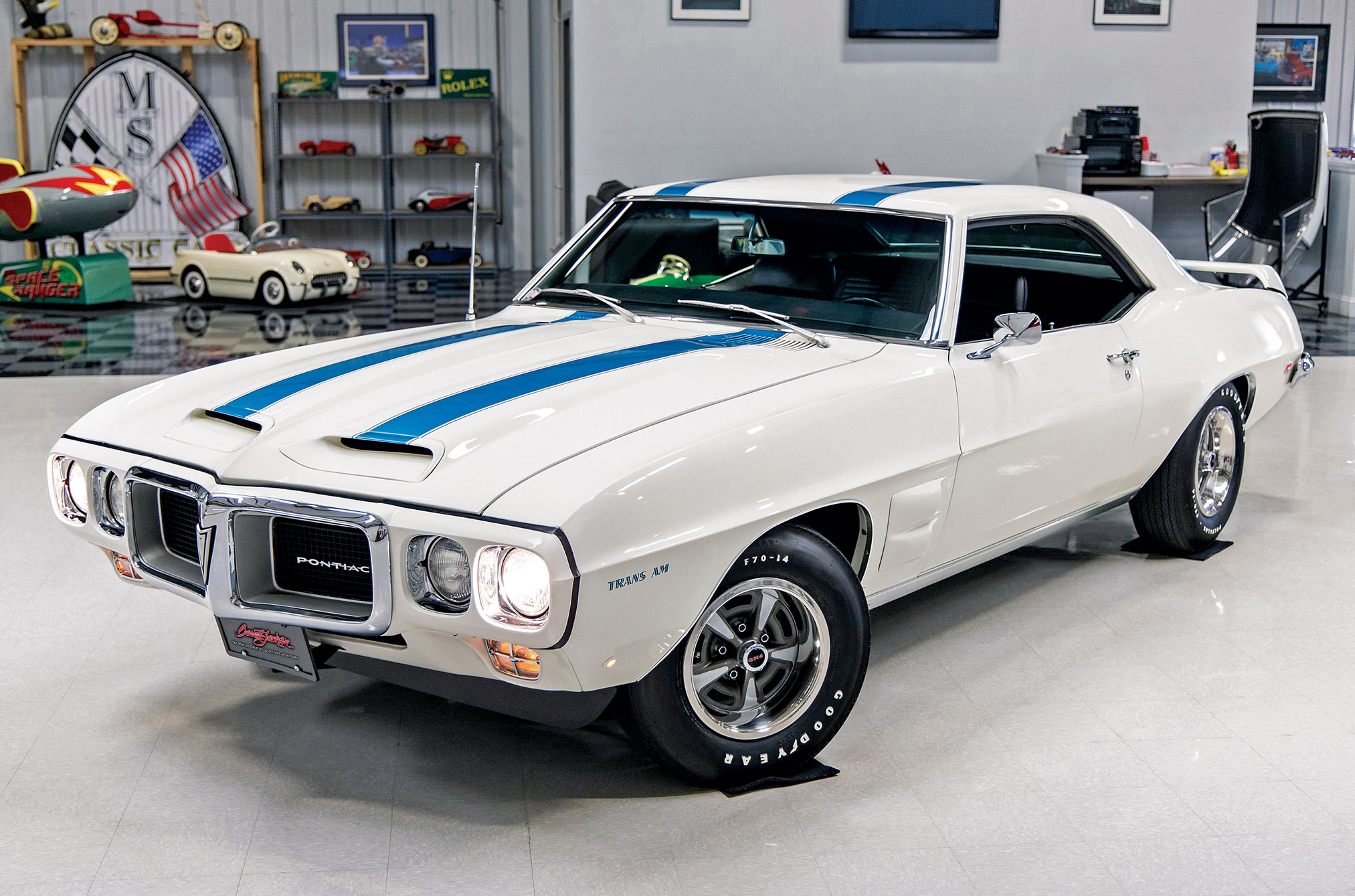Finished in obligatory Cameo White, this matching-numbers 1969 Pontiac Firebird Trans Am was built at GM’s Norwood, OH, assembly plant on June 23, 1969. It is one of only 697 Trans Am models built for ’69 and one of only 43 with a black interior. Other options include an AM radio, a center console and ...

Courtesy of Barrett-Jackson
Chassis Number: 223379N104801